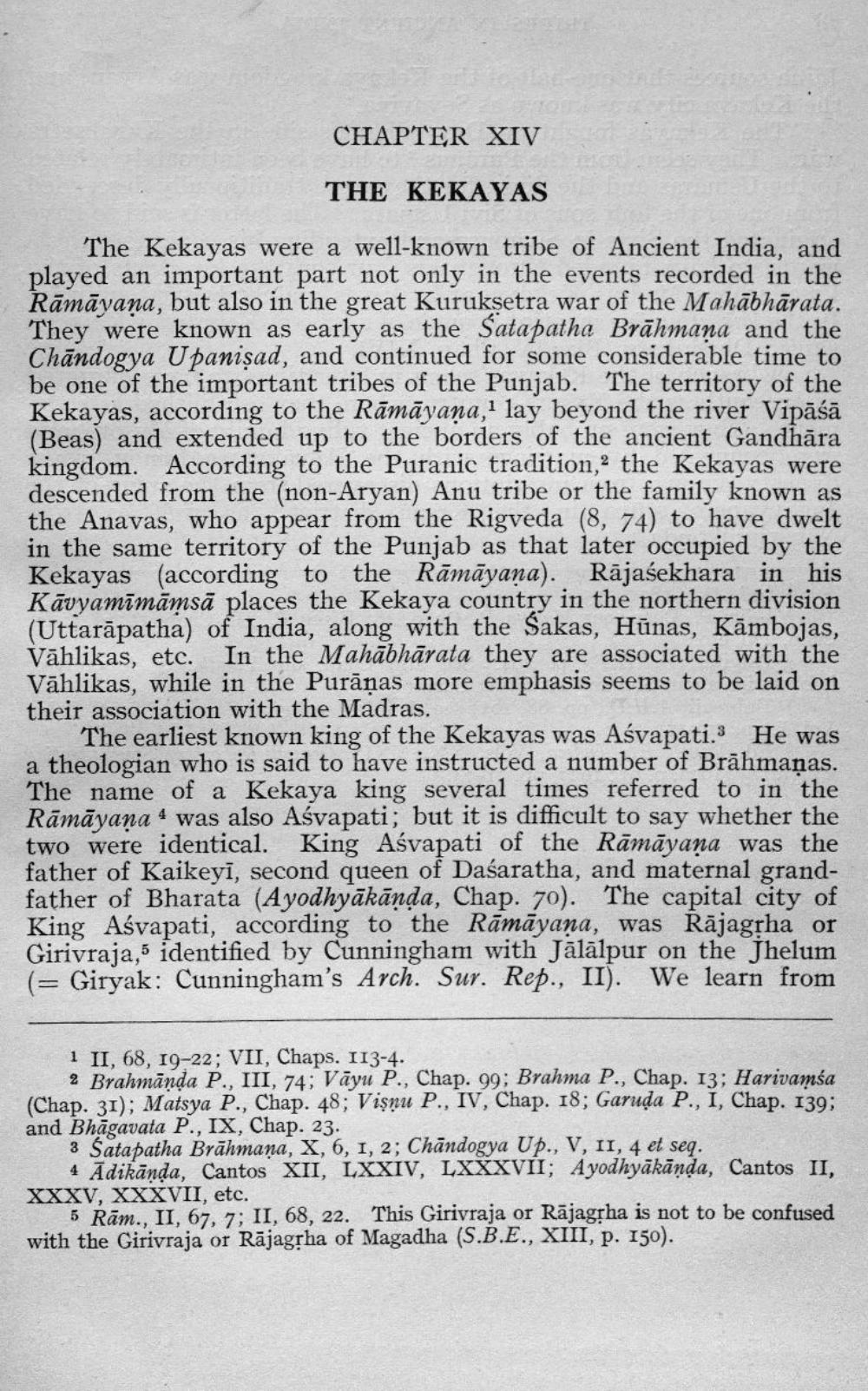________________
CHAPTER XIV
THE KEKAYAS
The Kekayas were a well-known tribe of Ancient India, and played an important part not only in the events recorded in the Rāmāyaṇa, but also in the great Kuruksetra war of the Mahābhārata. They were known as early as the Sata patha Brāhmana and the Chāndogya Upanişad, and continued for some considerable time to be one of the important tribes of the Punjab. The territory of the Kekayas, according to the Rāmāyaṇa, lay beyond the river Vipāśā (Beas) and extended up to the borders of the ancient Gandhāra kingdom. According to the Puranic tradition, the Kekayas were descended from the (non-Aryan) Anu tribe or the family known as the Anavas, who appear from the Rigveda (8, 74) to have dwelt in the same territory of the Punjab as that later occupied by the Kekayas (according to the Rāmāyana). Rājasekhara in his Kāvyamīmāmsā places the Kekaya country in the northern division (Uttarāpatha) of India, along with the Sakas, Hūnas, Kāmbojas, Vāhlikas, etc. In the Mahābhārata they are associated with the Vählikas, while in the Purāņas more emphasis seems to be laid on their association with the Madras.
The earliest known king of the Kekayas was Aśvapati. He was a theologian who is said to have instructed a number of Brāhmaṇas. The name of a Kekaya king several times referred to in the Rāmāyana 4 was also Aśvapati; but it is difficult to say whether the two were identical. King Aśvapati of the Rāmāyana was the father of Kaikeyi, second queen of Daśaratha, and maternal grandfather of Bharata (Ayodhyākānda, Chap. 70). The capital city of King Aśvapati, according to the Rāmāyana, was Rājagrha or Girivraja, identified by Cunningham with Jālālpur on the Jhelum (= Giryak: Cunningham's Arch. Sur. Rep., II). We learn from
1 II, 68, 19-22; VII, Chaps. 113-4.
2 Brahmānda P., III, 74; Vāyu P., Chap. 99; Brahma P., Chap. 13; Harivamsa (Chap. 31); Matsya P., Chap. 48; Vişnu P., IV, Chap. 18; Garuda P., I, Chap. 139; and Bhagavata P., IX, Chap. 23.
3 Satapatha Brāhmana, X, 6, 1, 2; Chāndogya Up., V, II, 4 et seq.
4 Ādikānda, Cantos XII, LXXIV, LXXXVII; Ayodhyākānda, Cantos II, XXXV, XXXVII, etc.
5 Rām., II, 67, 7; II, 68, 22. This Girivraja or Rājagpha is not to be confused with the Girivraja or Rājagrha of Magadha (S.B.E., XIII, p. 150).




